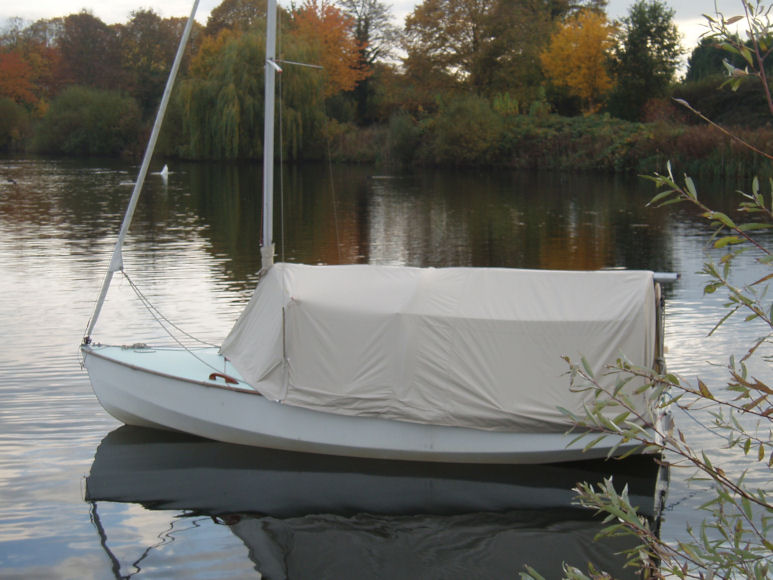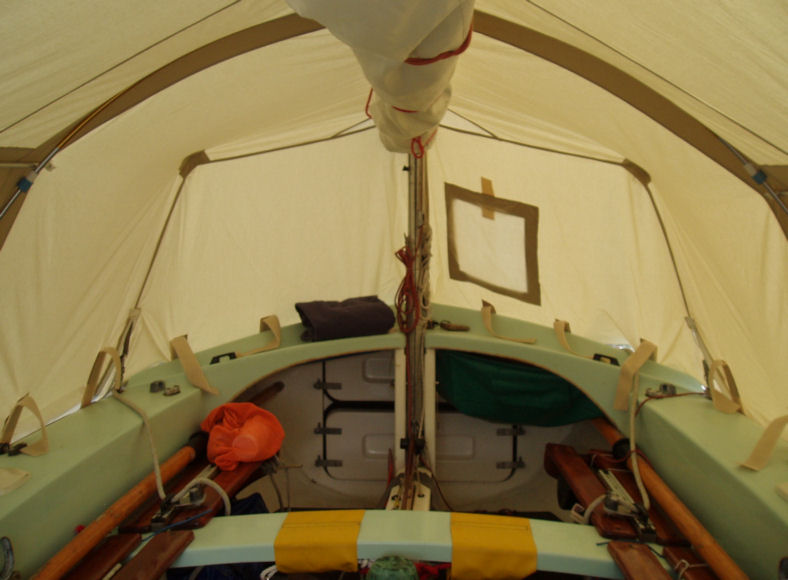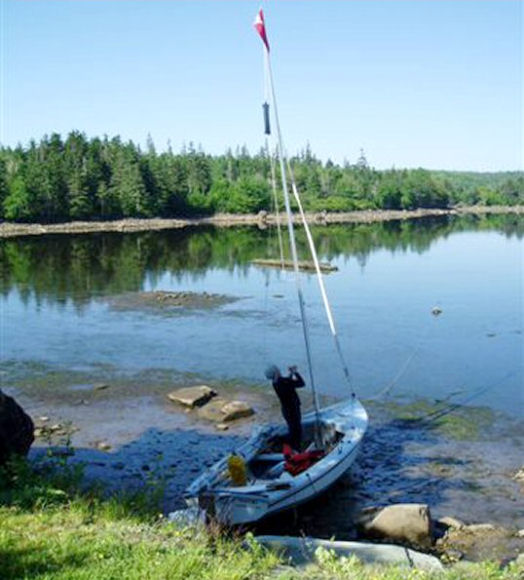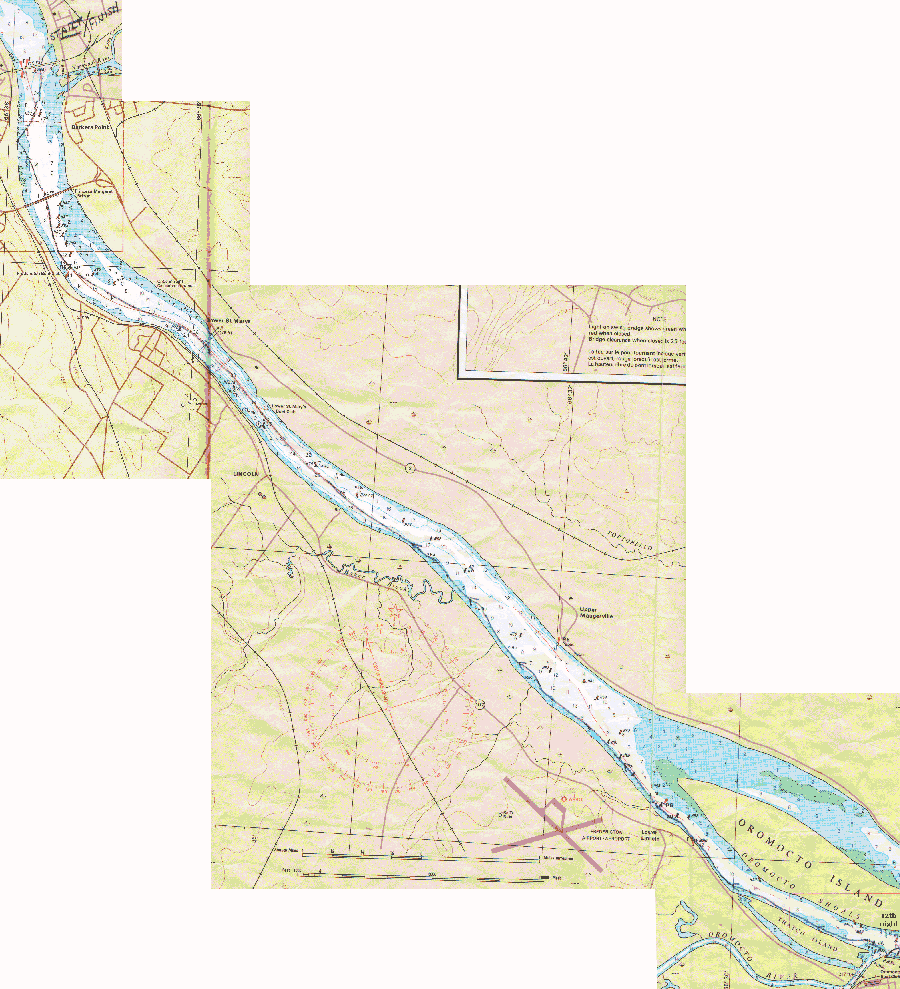| Dawdling Under Canvas
Along the A September 2008 Cruise in Wayfarer 8328 Naomi by Jim Fraser Sept. 23 & Postscript ... |
|
September 23 Tuesday:
Last night I had a sore back
and couldn’t find a comfortable
position to sleep. As well, a power boater had left the marina late in
the
evening. Sometime after darkness fell,
he ran his craft onto a shoal. Although this occurred some distance
away the
pitch of his roaring motor was irritating. His
sporadic attempts to get off the mud went on for
almost two
hours. Luckily for him and me, he ran
aground
at low water and eventually his boat floated off the shoal on its own.
...In the morning Naomi’s boom tent was covered with thick frost and the dock was slippery with frost also. There was a dense river fog from the warm water and cold air. I lit the Coleman lantern and set it on the floor for heat and light as I rummaged about preparing Naomi to leave. Perhaps the fog would be thinner once we were clear of the channel between Oromocto and However, the fog was thicker on the river. But I motored along at low speed anyway. At some point the sun would burn this off. Near I decided to check the ramp again in case it had been upgraded - in which case I’d use it now. The ramp was unchanged though. As I left it and was approaching the low railway bridge which had given me a fright when I first left Fredericton, a thought dawned on me. When I had sailed towards the bridge on the first day, I was reassured that since I had taken Naomi below it in the past everything would be fine. I now realized that even though I have been to this ramp upriver from the rail bridge on a number of occasions, I’d never launched my Wayfarer there nor sailed her under that bridge before. I had been challenging the bridge versus mast height for the first time. Instead of concentrating on Naomi’s tiller, I should have lowered the mast somewhat to ensure a safe transit. I’m fortunate that foolish behaviour isn’t always punished. When I finally checked the chart, I found that the clearance is 25 feet. It was lunch time when I returned to the ramp with my |
|
Postscript
The passage turned out as I
had hoped it would. The weather was better
than I'd anticipated and
I enjoyed dawdling along the
Extra Bits The government publishes a
pilot and strip charts for the
The motor mount I have is unnecessarily cumbersome and there must be a better alternative. It does work well though, and is very easy to remove when not required. The original motor mount from Abbott was a poor design. I am satisfied with the 2hp short shaft Honda motor. Several years ago, I owned a 4hp Johnson motor which I used on my Wayfarer. It was a heavier motor and I don’t believe any extra power it had was useful. It did have an auxiliary fuel tank which I miss, though. Kneeling on the stern to fill the Honda is a bit risky when cruising single-handed. The Honda is light enough that I use it on my 35-year-old Grumman 17’ canoe with a side mount also.  Anchor stowage: smaller Danforth in canvas bag. Stern line in blue bin. Both lines secured to bulkhead. I use Danforth anchors but
another pattern may hold better
to grassy river bottoms encumbered with old tree limbs and other debris
to snag
onto.
  The heavy canvas boom-tent is a bit of a chore to set up and remove each day. A damp or frosty tent is hard to stow under the foredeck. Also, the material shrinks and one has to pull hard to stretch it again so the snaps will fit. However, the material is warm, fire-resistant, provides insulation for the interior and doesn’t flap around like a synthetic material might. I have seen photos of more elaborate boom-tents (above) but I am content with the low, less complex pup-tent style that I own. A few years ago I capsized my Mark 3 Wayfarer off The main thing is that sending
CO2 cylinders by air violates all
transportation of dangerous goods regulations and thus, ordering
anti-capsize
cushions from the
... I have installed a block near the mast head and use a line to raise and lower the device. The line also serves as a topping lift for the boom. Probably, an inflatable CO2 life-vest could be outfitted in place of a more expensive and difficult to get anti-capsize cushion. For coastal cruising, particularly when single-handed, I believe some time should be spent on fitting an effective mast head buoyancy unit. I’m skeptical of how useful bits of foam padding, bicycle tubes and empty Javex bottles would be following a capsize in rough weather. I left the Secumar at home on this cruise since I knew the |
| return to Dawdling index return to Cruise Logs index |
